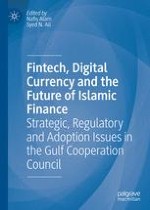2021 | OriginalPaper | Chapter
9. Does FinTech Revolution Lead to the Disintermediation of Banks? A Study into Islamic Bank Income
Authors : Ruhaini Muda, Mohd Saifulizwan Mohd Lateff, Roshayani Arshad, Arif Azhan Rashdan, Ibrahim Abiodun Oladapo, Jaizah Othman
Published in: Fintech, Digital Currency and the Future of Islamic Finance
Publisher: Springer International Publishing
Activate our intelligent search to find suitable subject content or patents.
Select sections of text to find matching patents with Artificial Intelligence. powered by
Select sections of text to find additional relevant content using AI-assisted search. powered by
